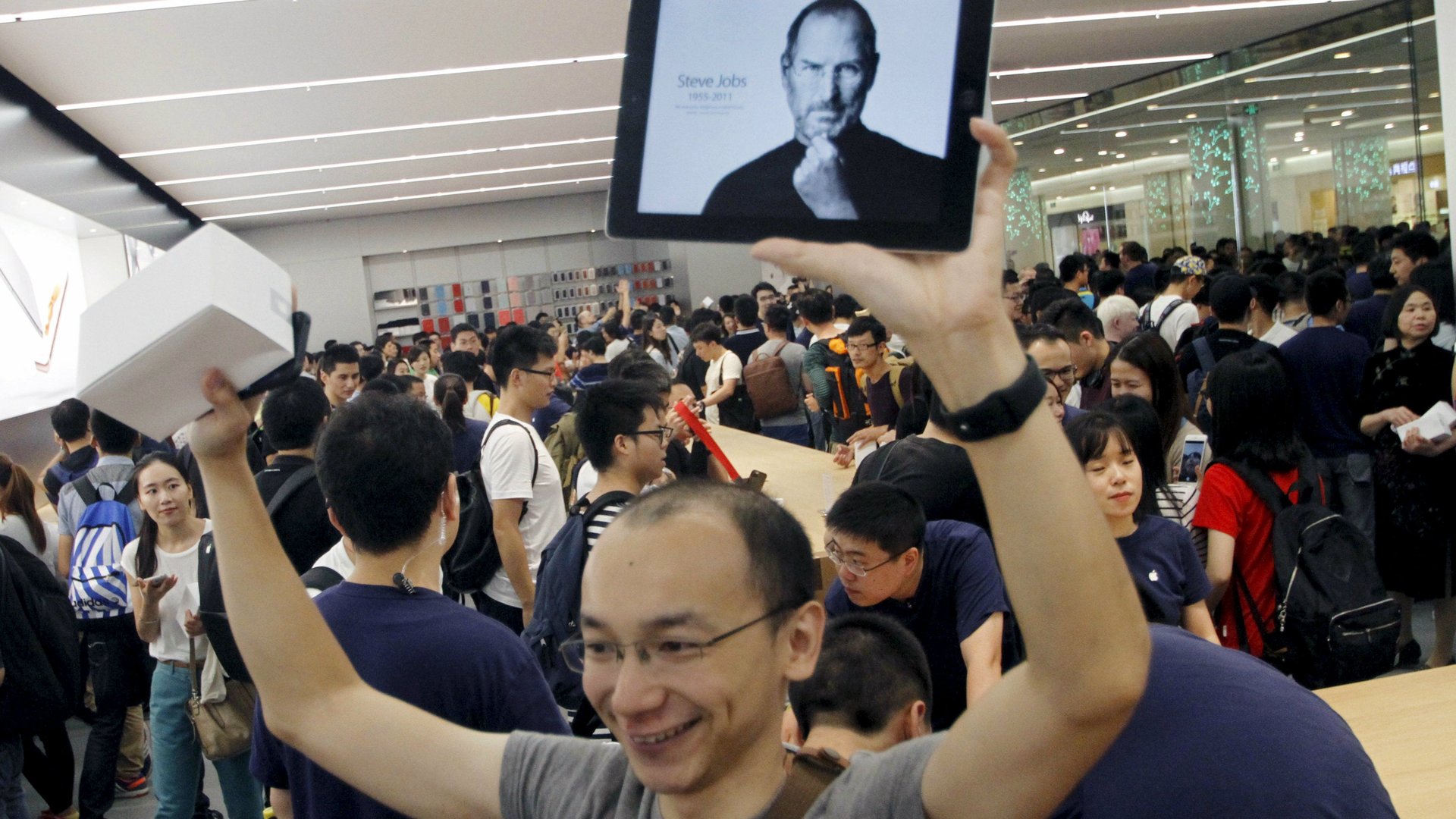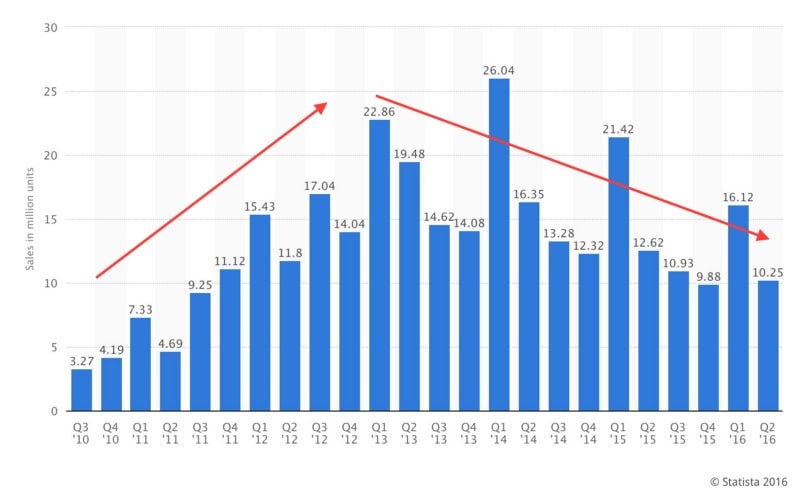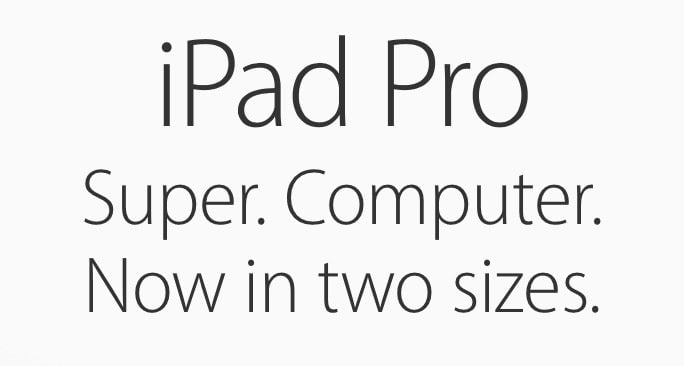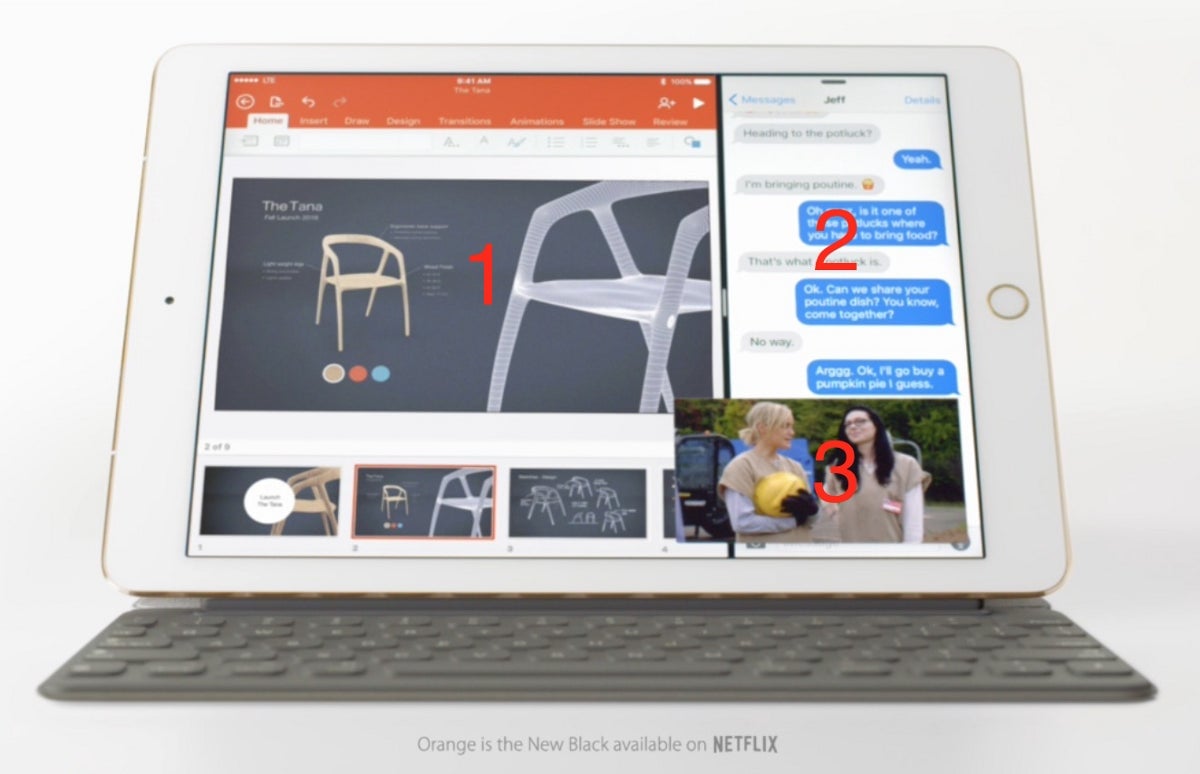Apple’s iPad identity crisis
The iPad really is a strange animal, wanting to be both a dead-simple tablet, successfully so, and trying to replace PCs, less felicitously. From day one, Steve Jobs knew this to be an open question, one the newer iPad Pros attempt to answer as they “fork” the iPad line.


The iPad really is a strange animal, wanting to be both a dead-simple tablet, successfully so, and trying to replace PCs, less felicitously. From day one, Steve Jobs knew this to be an open question, one the newer iPad Pros attempt to answer as they “fork” the iPad line.
Consider the iPad’s eventful and paradoxical first six years:
- Announced in Jan. 2010, the iPad surprises with its low $499 price. Naysayers are confused and disappointed.
- First deliveries take place three months later. Actual users are enthusiastic; disappointed naysayers their tune: “this changes everything.”
- Over the next year, the iPad follows a never-seen-before meteoric rise, faster than the iPhone. Industry savants pronounce it the future of personal computing:

- Reality sets in. The iPad is a tease, it’s not really a PC replacement! Sales plunge:

- In June 2012, Microsoft breathes new life into the tablet genre with its Surface 2-in-1 hybrid. Looking down from its tower of aesthetic and ergonomic purity, Apple mocks the “toaster fridges.”
- Three years later, pragmatism bites dogmatism. Apple’s own toaster-fridge, the muscular 12.9” iPad Pro, complete with Smart Keyboard and Pencil, is introduced in Sept. 2015. The more normal-sized 9.7” iPad Pro follows in March 2016.
In the most recent quarter, the iPad gained a 7% year-on-year revenue uptick, reversing its three-year-long decline. Units are still down 9%, which pushes the average iPad price up, from $415 to $490. This non-trivial 18% increase is a measure of the iPad Pro’s impact on Apple’s tablet business.
And just as the business is being revived, the t-word, tablet, is becoming less fashionable. See the wording on Apple’s website:

At the end of the latest iPad Pro commercial, we see three windows (wink, wink.)

“Imagine what your computer could do,” the narration exclaims [as always, edits and emphasis mine]. “If it was an iPad Pro.”
Subtle this is not. Nor is it particularly clear.
On the surface (pun unintended), Apple proffers the iPad Pro as a computer. We don’t begrudge Apple its right to “performance bragging:” Witness Apple’s rightfully proud statements about its powerful homegrown Ax line of processors and the impending A10 64-bit processors that easily outperform Seymour Cray’s supercomputers. But simply promoting the iPad to “computer” avoids the real issue: Is the iPad Pro a PC replacement? Can we toss out our laptops and move wholly to our iPads?
For some the answer is obvious. Education expert Fraser Speirs makes a clear case for deploying iPads instead of PCs in schools. Students and teachers are better off—no ifs, no buts. (You could do worse than to follow @fraserspeirs on Twitter.)
But if your work life revolves around preparing complex documents, a Mac or PC is still more convenient, even as the list of productivity tools in Apple’s App Store continues to grow and delights a growing but still relatively small number of users. One wag sees the notion of “toss your laptop” as akin to using Linux on the desktop. It’s something one should do, but most users keep their PCs and Macs.
Apple is known for playing the long game. They’re rarely the first in a new domain, and they’re not always immediately successful when they join, but they often end up with the lion’s share of revenue and, more important, profits.
If we apply this pattern to the iPad Pro—if we see the device as a recent entrant in the PC replacement race—it becomes clear that Apple is in the “unfinished business” phase, particularly on the hardware side. The iPad Pro’s Smart Keyboard is ingenious but lacks a trackpad. To be sure, there is the iPad’s touch screen, but ergonomists know how a real trackpad is preferable to constantly raising one’s hand to the screen: Just watch happy Magic Trackpad users with their Macs. And Apple’s 2-in-1 competitor, the Microsoft Surface Pro, offers a trackpad on its keyboard cover.
Apple’s iPad stylus, the Pencil, is an improvement on Microsoft’s in one regard: It doesn’t need an AAAA battery—it can be recharged directly from the iPad or with a gender-changing adapter to a standard lightning/USB cable. But the tiny adapter is soon lost, and the Pencil rolls away far too easily. Microsoft’s stylus contains a magnet, and conveniently sticks to the side of the Surface tablet.
These are obvious and surprising misses for a company that’s known for its attention to convenience and aesthetics—misses that are easily remedied.
In the long run, and somewhat counterintuitively, Apple is in an enviable position because of its prosperous Mac business. The Mac gained $5.2 billion in revenue in the most recent quarter, compared to $4.8 billion for the iPad. The iPad is certainly less profitable than the Mac, but if a lower price/profit iPad takes Mac business away, so be it: Apple will cannibalize itself rather than let a 2-in-1 interloper do it.
But which iPad are we speaking of? Let’s not overlook the fact that the iPad line is now forked.
The iPad Pro undoubtedly appeals to a more demanding base of users than the smaller iPads. iOS is “growing windows,” a more visible file system and, in a soon-to-be-available version, will provide easier access to documents on a Mac desktop, or a documents folder. We’ve yet to see if these improvements help Mac users actually create more on their iPads, or if they merely make life more pleasant for those fortunate enough to commute between the two devices. In the longer run, progressively beefing up the simpler/cleaner iOS is a better bet than adding more layers of bug fixes and features on top of the noble and worthy OS X, now macOS.
The original iPad and iPad Mini, on the other hand, pretty much fully satisfy the “non-pro” users who don’t need to do much more than message family and friends, navigate social websites, share pictures, watch videos, and so on.
In his Jan. 27th, 2010 presentation, Steve Jobs presciently said the iPad “had to find its place between the iPhone and the Mac.” It seems to have found two places: The evolving iPad Pro is leaning ever closer to a laptop; the original iPad—and more so the iPad Mini—tend towards the larger iPhones. It’ll be interesting to see if and how Apple entices happy iPad Mini users to upgrade.
We’ll know soon enough; the fall upgrade season is coming.